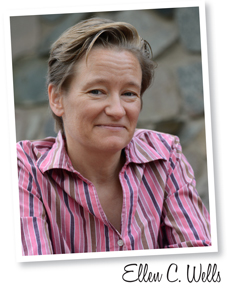11/1/2017
Musings On the Meal
Ellen C. Wells

November is the perfect month to focus on food. Not only is the harvest wrapping up for most of us, but it’s also the month of my favorite holiday of them all—Thanksgiving. Being a pescatarian for a dozen years or more hasn’t diminished the fowl-centered holiday for me at all. Thanksgiving isn’t about the turkey, after all. And it’s not about the football either. Nor the shopping. You’re thinking I’m going to say it’s all about the time with family, aren’t you?
Well, yes, it is—kind of. Thanksgiving is about the meal, whether you prepare and enjoy the meal with family or dig in with the volunteers and clients at a shelter. During Thanksgiving we as a country (and Canada, too!) take a pause to enjoy what was probably the first form of building a community. While we think of pilgrims and Native Americans joining together to honor the harvest, we could really be thinking of a bunch of early humans who, thanks to their recent acquisition of fire, had time to roast their warthog and sit with one another as a group of travelers. (At least that’s my take on a recent NatGeo Channel documentary on the subject of early humans.)
As many of you know, I grew up on a farm. While my dad and brothers usually had an earlier breakfast than the rest of us, we typically ate lunch (in the summer) and dinner as a family. Nearly everything on the lunch and dinner tables was grown or raised by our own hands. We had milk cows, and my mother would make butter and some cheese. We raised cows, pigs and chickens for our own use, and the 1/2–acre garden supplemented the acres and acres of potatoes, corn and cole crops we raised commercially. Each August Mom and the girls toiled away in a hot kitchen to “put up” much of the garden harvest. Christmas vacation week was spent butchering and wrapping the animals, with all hands on deck for that. Mom would even label the packages with the animal’s name. Once, after coming back from Christmas, my teacher asked the class to write about what they did during their vacations. I’m not sure the teacher had ever before received a description of how to slaughter a cow, with along with a fairly accurate drawing of what piece of meat is located where on said animal.
One story I like to tell to non-farm folks is about my childhood birthdays. My mom would ask me what I wanted for my special birthday dinner and each year I would say spaghetti and tomato sauce. What’s so special about spaghetti and tomato sauce? Well, the stockpile of home-canned tomatoes were always getting low by March, my birthday month. Spaghetti and sauce would typically not be possible after April. Something that is a quick-and-easy meal from a store-bought sauce was something rare and special back then.
This is all to say our family knew what was in our meals, and even who was in our meals. That kind of farm upbringing may be atypical nowadays, but people do care about the source and composition of their food. Perhaps they have food safety concerns, want to lower their carbon footprint or want to support local small businesses. Whatever the reason, citizens are more interested in where that potato, kale and pork chop on their plates came from.
Whether we teach folks to grow their own food, offer a CSA share or run a farm stand as part of the business, our industry can help customers feel safe, successful, supportive and supported. Just like all those millennia ago when we sat around the roasting game. Each one of us is contributing to the meal. GP